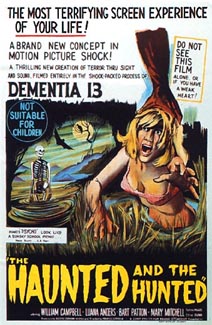 |
||
Main Page |
People
Page |
 |
The Horror Genere
By the time of The Innocents (1961) (an adaptation of Henry James's The Turn of the Screw ) and The Haunting (1963), a restrained style and emphasis on character had begun to seem old-fashioned for horror films.
Before 1960 the horror genere had a restrained style and emphasis on character, but as the years passed, these elements had begun to seem old-fashioned for horror films. Alfred Hitchcock had in fact changed the direction of the genre in 1960 with Psycho; the movie not only presented its most frightening moment, the shower murder, with graphic glee, it also suggested that horror resides in everyday life rather than in the alternate worlds of the supernatural, the fantastic, or the Gothic.
The subsequent rise of the "splatter film" was clearly inspired by Psycho, and it is no coincidence that Tobe Hooper's The Texas Chainsaw Massacre (1974) was based, like Hitchcock's film, on the case of real-life mass murderer Ed Gein. The recent so-called "slice and dice" films (Halloween, 1978; Friday the 13th, 1980; Slumber Party Massacre, 1982) and "living dead" movies (beginning with George Romero's Night of the Living Dead, 1968) are demonstrations of how contemporary special effects technology can depict increasingly gruesome and imaginative dismemberment and mutilation usually at the expense of character, plot, and theme.
This proliferation of the horror genere caused mainly by Psycho, has led many to believe that Hitchcock was a horror director, when in fact, his only films that touch the boundaries of horror were Psycho and The Birds.

